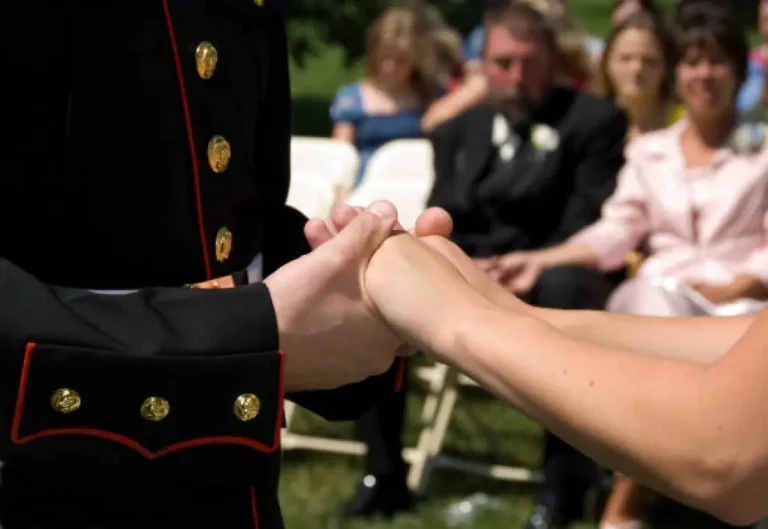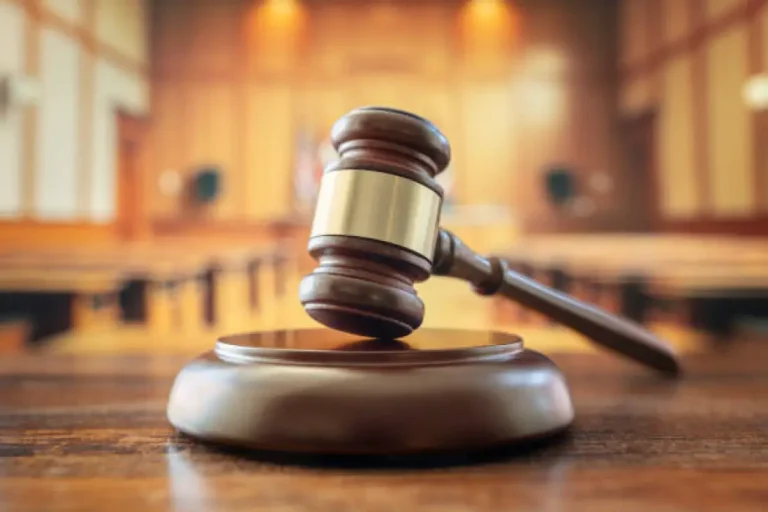When a Police Officer Mother Fought Back: A Story of Domestic Violence, Justice, and Maternal Protection
How one mother used her professional skills and unwavering determination to save her daughter from an abusive marriage
The Late-Night Call That Changed Everything
The harsh barking of neighborhood dogs provided an unwelcome soundtrack to Officer Elizabeth Arriaga’s exhaustion. After completing a grueling 12-hour shift that included breaking up a violent altercation at a downtown establishment and spending hours completing incident reports, she desperately craved the sanctuary of sleep.
As a veteran police officer with over fifteen years of service, Elizabeth understood the physical and emotional toll of law enforcement work. The adrenaline from dangerous situations takes time to subside, leaving officers in a state of hypervigilance even in their own homes. She had just begun to feel her body relax when urgent knocking shattered the quiet of the 1:00 AM hour.
Police training immediately activated her heightened awareness. Late-night visitors rarely brought good news, and her instincts suggested this situation demanded caution. Grabbing a sturdy kitchen chair for protection, she approached the door with the measured steps of someone accustomed to potentially dangerous encounters.
“Who is it?” she called out, her voice carrying the authority that came naturally after years of commanding respect in difficult situations.
The silence that followed felt ominous, broken only by weaker knocking and a voice that instantly transformed her from police officer to terrified mother.
“Mom… please open up.”
A Mother’s Worst Nightmare Becomes Reality
The voice belonged to Sarah, Elizabeth’s twenty-five-year-old daughter. With trembling hands, Elizabeth fumbled with multiple locks, her professional composure crumbling as maternal instincts took control.
The moment the door opened, Sarah collapsed into her mother’s arms like a wounded animal seeking shelter. Elizabeth’s trained eyes immediately began cataloging injuries with the clinical detachment that helped her process crime scenes, but her heart shattered as she realized this crime scene involved her own child.
“Sarah, what happened to you?” Elizabeth whispered, her voice breaking as she held her daughter’s trembling form.
The yellow porch light revealed the full extent of the damage. Sarah’s lip was split open with dried blood creating a dark line down her chin. Her left eye was swollen nearly shut, displaying the purplish-black coloration of significant trauma. Most alarming was how Sarah clutched her abdomen, suggesting injuries beyond what was immediately visible.
“My husband,” Sarah sobbed, the words emerging between ragged breaths. “He attacked me. Because of his affair.”
The Professional Becomes Personal
Elizabeth’s police training and maternal fury created a volatile combination as she helped Sarah inside. Years of responding to domestic violence calls had prepared her professionally for such situations, but nothing could have prepared her emotionally for seeing her own daughter as a victim.
She immediately began applying first aid protocols, cleaning Sarah’s wounds with gentle precision while her mind raced through evidence collection procedures. When she carefully lifted Sarah’s shirt to examine her torso, Elizabeth discovered a massive bruise covering much of her daughter’s abdomen—clear evidence of multiple, vicious impacts.
“It was Robert, wasn’t it?” Elizabeth asked, though she already knew the answer. Robert Martinez, Sarah’s husband of three years, had always struck Elizabeth as controlling, but she had never imagined he was capable of such violence.
While waiting for medical transportation, Elizabeth noticed Sarah’s phone buzzing repeatedly with missed calls from “Robert.” A text message appeared on the lock screen: “Keep quiet if you want to keep everything.”
The threat was clear, and Elizabeth’s law enforcement experience recognized the pattern of an abuser attempting to maintain control through intimidation.
Medical Evidence and Documentation
At the hospital, Dr. Leticia Figueroa, a family friend and experienced emergency physician, met them at the entrance. Her professional assessment quickly revealed the full scope of Sarah’s injuries: bruising consistent with strangulation attempts around her neck and wrists, defensive wounds on her arms, and potential internal injuries requiring immediate imaging.
“We need comprehensive X-rays and a CT scan,” Dr. Figueroa explained with grave concern. “The abdominal bruising suggests possible internal bleeding.”
While Sarah underwent medical evaluation, Elizabeth began the meticulous documentation process that would prove crucial in any legal proceedings. She photographed every visible injury with her personal camera, creating a detailed record that would serve as evidence.
Her phone rang with an unknown number—undoubtedly Robert attempting to reach Sarah. Elizabeth declined the call without hesitation. She had no intention of allowing him any access to further intimidate her daughter.
Building the Case: A Mother’s Investigation
After Sarah was stabilized and released with pain medication and strict instructions for follow-up care, Elizabeth began applying her investigative skills to her daughter’s situation. Years of police work had taught her that successful prosecutions required comprehensive evidence collection and strategic planning.
Her neighbor, Miss Camila, approached the next morning with obvious concern. “Did something happen, Elizabeth? I heard commotion last night.”
When Elizabeth explained the situation, Miss Camila’s anger was immediate and fierce. More importantly, she mentioned her security camera system, which had captured Sarah’s arrival at Elizabeth’s door.
The footage was heartbreaking but legally valuable. It showed Sarah stumbling to the door, clearly injured and desperate for help. Her faint cries for assistance were audible on the recording, providing timestamp evidence of when the abuse had occurred.
Legal Strategy and Professional Networks
Elizabeth immediately contacted James Ellison, the family’s attorney, despite the early hour. As a police officer, she understood the importance of legal counsel in domestic violence cases, particularly when the abuser might have financial resources for aggressive legal representation.
“James,” she said with cold determination, “we need to begin proceedings immediately. This isn’t just family drama—this is criminal assault.”
The attorney’s response was swift and professional. “Elizabeth, with your background and the evidence you’re describing, we can build a strong case. But we need to be thorough and strategic.”
Elizabeth spent the following days creating a comprehensive evidence file that would have impressed any detective. She photographed all of Sarah’s injuries from multiple angles, documented the timeline of events, and secured copies of all medical records from the hospital visit.
Uncovering Additional Crimes
While Sarah attended her first therapy session with a trauma counselor, Elizabeth received an unexpected phone call from the head of the public property registry office.
“Mrs. Arriaga,” the official said in hushed tones, “I noticed your name and your daughter’s on a recent property transfer that seemed suspicious.”
Elizabeth’s blood pressure spiked as she rushed to review the documents. The file revealed that a piece of valuable land—her father’s inheritance that had been in the family for generations—had been fraudulently transferred to Denise Salgado, Robert’s mistress.
The signatures were obvious forgeries, and the registry employee confirmed that Robert had personally filed the paperwork, claiming to represent both Sarah and Elizabeth. Not only had he physically abused Sarah, but he had also committed fraud by stealing family property to benefit his extramarital relationship.
Surveillance and Evidence Gathering
That evening, Elizabeth employed surveillance techniques she had learned during her police career. She positioned herself outside The Archer’s Bar, a location Sarah had mentioned Robert frequented with his mistress.
Around 8:00 PM, Robert’s silver pickup truck arrived. Minutes later, a woman in a red dress emerged from a nearby corner—Denise Salgado, the same woman who had fraudulently received the family’s land.
Elizabeth documented their meeting with photographs, capturing them embracing and entering a nearby hotel together. Each image was timestamped and geotagged, creating an irrefutable record of the adultery that would strengthen their legal case.
The digital evidence was carefully stored in password-protected files, following chain-of-custody procedures Elizabeth had learned during her police training.
Law Enforcement Coordination
Elizabeth contacted Commander Rosales, a trusted colleague, to request additional patrol coverage for her neighborhood. While she couldn’t officially investigate her own case due to conflict of interest, she could ensure that proper law enforcement resources were aware of the situation.
“The evidence is substantial,” she told the commander. “This isn’t just domestic violence—we’re looking at fraud, forgery, and ongoing threats.”
The commander immediately authorized increased patrol presence and assigned a detective to formally investigate the criminal aspects of Robert’s behavior.
The Confrontation
Several days later, Elizabeth decided to confront Robert directly, bringing her complete evidence file to his pawn shop business. She found him in his back office, counting cash with the arrogance of someone who believed himself untouchable.
“What brings the police mother-in-law here?” Robert sneered, his tone dripping with contempt.
Elizabeth said nothing initially. Instead, she methodically laid out the evidence: photographs of Sarah’s injuries, medical reports documenting the abuse, video footage of Sarah’s desperate arrival at Elizabeth’s home, photographs of Robert’s adultery, and copies of the fraudulent property transfer documents.
Robert’s confident expression faltered as he reviewed the comprehensive evidence, but his arrogance quickly returned. “So what? I have better lawyers than you’ll ever afford.”
“We’ll resolve this in court,” Elizabeth replied with professional calm.
Robert exploded with rage, jumping to his feet. “Your daughter is weak! She needed discipline!”
Elizabeth felt every muscle in her body tense with the desire to physically respond, but her training and professionalism prevailed. She collected her evidence and turned to leave.
“The rules have changed,” she said firmly. “You won’t be disciplining anyone anymore. The law will be disciplining you.”
The Legal Battle
The trial became a high-stakes confrontation between comprehensive evidence and expensive legal representation. Robert’s attorney, brought in from Mexico City, attempted to discredit both Sarah and Elizabeth, portraying them as vindictive women fabricating allegations.
However, the evidence was overwhelming and professionally presented. The medical reports clearly documented abuse patterns. The video footage provided irrefutable proof of Sarah’s condition. The photographs of Robert’s adultery established motive and character. The forged documents proved criminal intent beyond domestic violence.
The turning point came when Denise Salgado agreed to testify against Robert. Elizabeth had approached her with evidence of the fraud, offering her immunity in exchange for truthful testimony about Robert’s criminal activities.
“He promised me a share of the stolen land,” Denise testified, her voice shaking with nervous energy. “He forged his wife’s signature to transfer property that didn’t belong to him.”
Robert’s composure finally cracked completely. He lunged from his seat, screaming accusations of betrayal before court security restrained him.
Justice Delivered
When Elizabeth took the stand, she spoke with the authority of both a law enforcement professional and a protective mother.
“I am a police officer,” she told the jury with clear conviction, “but today I am here as a mother who will not allow anyone to abuse my daughter and mock our legal system.” She pointed directly at Robert. “That man is not a husband—he is a criminal who committed assault, fraud, and intimidation.”
The verdict was swift and comprehensive. The court issued a permanent protection order for Sarah, froze Robert’s assets pending investigation, nullified the fraudulent property transfer, and referred the case to the district attorney for prosecution of multiple felony charges including domestic violence, fraud, and extortion.
The Aftermath and Recovery
As they walked out of the courthouse, Elizabeth felt the weight of justice accomplished. The local newspaper’s front page the following day featured Robert in handcuffs with the headline: “Pawn Shop Owner Arrested for Domestic Violence and Land Fraud.”
Sarah’s recovery would be gradual, involving continued therapy and rebuilding her sense of safety and self-worth. She moved back home with Elizabeth, slowly regaining her strength, confidence, and ability to trust again.
The community, which had initially been swayed by Robert’s manipulative charm, now offered support and apologies to Sarah and Elizabeth. Denise disappeared from town, seeking to rebuild her life elsewhere after cooperating with the prosecution.
Lessons Learned and Professional Insights
Elizabeth’s experience highlighted several crucial aspects of domestic violence cases that extend far beyond her personal situation:
The Intersection of Professional and Personal
Law enforcement officers face unique challenges when domestic violence affects their own families. While their training provides valuable skills for evidence collection and legal procedures, the emotional impact can be overwhelming when applied to loved ones.
The Importance of Comprehensive Documentation
Elizabeth’s methodical approach to evidence collection proved decisive in achieving justice. Every photograph, medical report, video recording, and document contributed to building an unassailable case that even expensive legal representation couldn’t overcome.
The Power of Community Support
Miss Camila’s security footage and the property registry official’s alert about suspicious documents demonstrated how community awareness and cooperation can provide crucial support for domestic violence victims.
Financial Abuse as Part of Domestic Violence
Robert’s fraud in stealing the family’s land illustrated how abusers often use financial manipulation and theft as additional tools of control. This aspect of abuse is frequently overlooked but can be equally devastating to victims.
Understanding Domestic Violence Patterns
Elizabeth’s story illuminates several important patterns that characterize domestic violence situations:
Escalation of Control
Abusers typically escalate their behavior gradually, starting with emotional manipulation and progressing to physical violence. Robert’s initial controlling behavior had evolved into life-threatening assault.
Multiple Forms of Abuse
Robert’s behavior included physical violence, emotional intimidation, financial fraud, and adultery—demonstrating how abusers often employ multiple tactics to maintain control over their victims.
Attempts to Isolate Victims
Robert’s threats and attempts to prevent Sarah from seeking help reflected the common abuser strategy of isolating victims from support systems.
Use of Intimidation
The threatening text messages and attempts to contact Sarah through friends showed how abusers continue intimidation tactics even after initial confrontations.
Legal Protections and Resources
Sarah and Elizabeth’s experience highlighted various legal protections available to domestic violence victims:
Emergency Protection Orders
Courts can issue immediate protection orders to prevent abusers from contacting or approaching victims while legal proceedings are pending.
Criminal Prosecution
Domestic violence is a criminal offense that can be prosecuted by the state, regardless of whether victims choose to press charges.
Asset Protection
Courts can freeze abuser assets to prevent them from hiding money or property that might be needed for victim compensation or support.
Documentation Requirements
Successful prosecution requires comprehensive evidence collection, including medical records, photographs, witness statements, and physical evidence.
The Role of Law Enforcement
Elizabeth’s background provided unique advantages in navigating the legal system, but it also highlighted how law enforcement agencies can better serve domestic violence victims:
Specialized Training
Officers need comprehensive training in domestic violence dynamics, evidence collection, and victim support to effectively respond to these complex situations.
Inter-Agency Cooperation
Successful cases often require coordination between police, medical professionals, social services, and legal advocates.
Long-term Support
Domestic violence cases require ongoing support and monitoring, not just immediate crisis response.
Technology and Evidence
Modern technology provides new tools for evidence collection and victim protection, from security cameras to digital communication records.
Prevention and Education
Elizabeth’s story also emphasizes the importance of prevention and education in addressing domestic violence:
Warning Sign Recognition
Community members, friends, and family need education about recognizing early warning signs of abusive relationships.
Support System Development
Victims need robust support systems that include family, friends, professional counselors, and legal advocates.
Financial Literacy
Understanding legal rights regarding property, finances, and assets can help victims protect themselves from financial abuse.
Professional Development
Ongoing training for law enforcement, medical professionals, and legal advocates ensures they can effectively support victims and prosecute abusers.
The Healing Process
Sarah’s recovery journey illustrated important aspects of healing from domestic violence trauma:
Professional Counseling
Specialized therapy helps victims process trauma, rebuild self-esteem, and develop healthy relationship patterns.
Family Support
Strong family relationships provide crucial emotional support during recovery, though family members may also need counseling to understand how best to help.
Community Reintegration
Returning to normal community activities and relationships helps victims rebuild their social connections and sense of belonging.
Legal Closure
Successful prosecution can provide psychological closure and validation that the abuse was wrong and criminal.
Long-term Impact and Prevention
The resolution of Sarah’s case had broader implications for domestic violence prevention in their community:
Public Awareness
Media coverage of Robert’s conviction educated the community about domestic violence patterns and legal consequences.
Deterrent Effect
Successful prosecution sends a clear message that domestic violence will be prosecuted to the full extent of the law.
Victim Empowerment
Sarah’s courage in seeking help and testifying encouraged other victims to come forward and seek assistance.
System Improvement
The case highlighted the importance of coordination between different agencies and professionals in addressing domestic violence effectively.
Conclusion: Justice, Healing, and Hope
Elizabeth’s fight for her daughter’s safety and dignity demonstrated that domestic violence can be defeated when victims have strong support systems, comprehensive evidence, and access to professional legal assistance. Her background in law enforcement provided unique advantages, but her determination and love as a mother were the driving forces behind their success.
The case serves as both inspiration and instruction for other families facing similar situations. It illustrates that abusers can be held accountable when victims have proper support and evidence, and that justice is possible even when facing significant challenges.
Sarah’s healing journey continues, supported by professional counseling, family love, and community acceptance. Her courage in leaving an abusive situation and testifying against her abuser has helped protect other potential victims and strengthened community awareness about domestic violence.
Elizabeth returned to her law enforcement career with enhanced understanding of domestic violence from both professional and personal perspectives. Her experience has made her a more effective advocate for other victims and a stronger voice for comprehensive domestic violence prevention and prosecution.
The scars from their ordeal remain as reminders of the battle they endured, but they also serve as symbols of survival, strength, and the unbreakable bond between a mother and daughter who refused to accept abuse as inevitable.
Their story proves that with courage, evidence, and determination, victims can escape abuse, abusers can be held accountable, and families can heal from even the most traumatic experiences. Justice may not always come easily, but it is possible when good people refuse to remain silent in the face of evil.
This account serves as both a powerful personal story and an educational resource about domestic violence prevention, evidence collection, and the legal protections available to victims. It demonstrates that with proper support and resources, domestic violence can be overcome and justice can prevail.

Emily Johnson is a critically acclaimed essayist and novelist known for her thought-provoking works centered on feminism, women’s rights, and modern relationships. Born and raised in Portland, Oregon, Emily grew up with a deep love of books, often spending her afternoons at her local library. She went on to study literature and gender studies at UCLA, where she became deeply involved in activism and began publishing essays in campus journals. Her debut essay collection, Voices Unbound, struck a chord with readers nationwide for its fearless exploration of gender dynamics, identity, and the challenges faced by women in contemporary society. Emily later transitioned into fiction, writing novels that balance compelling storytelling with social commentary. Her protagonists are often strong, multidimensional women navigating love, ambition, and the struggles of everyday life, making her a favorite among readers who crave authentic, relatable narratives. Critics praise her ability to merge personal intimacy with universal themes. Off the page, Emily is an advocate for women in publishing, leading workshops that encourage young female writers to embrace their voices. She lives in Seattle with her partner and two rescue cats, where she continues to write, teach, and inspire a new generation of storytellers.








